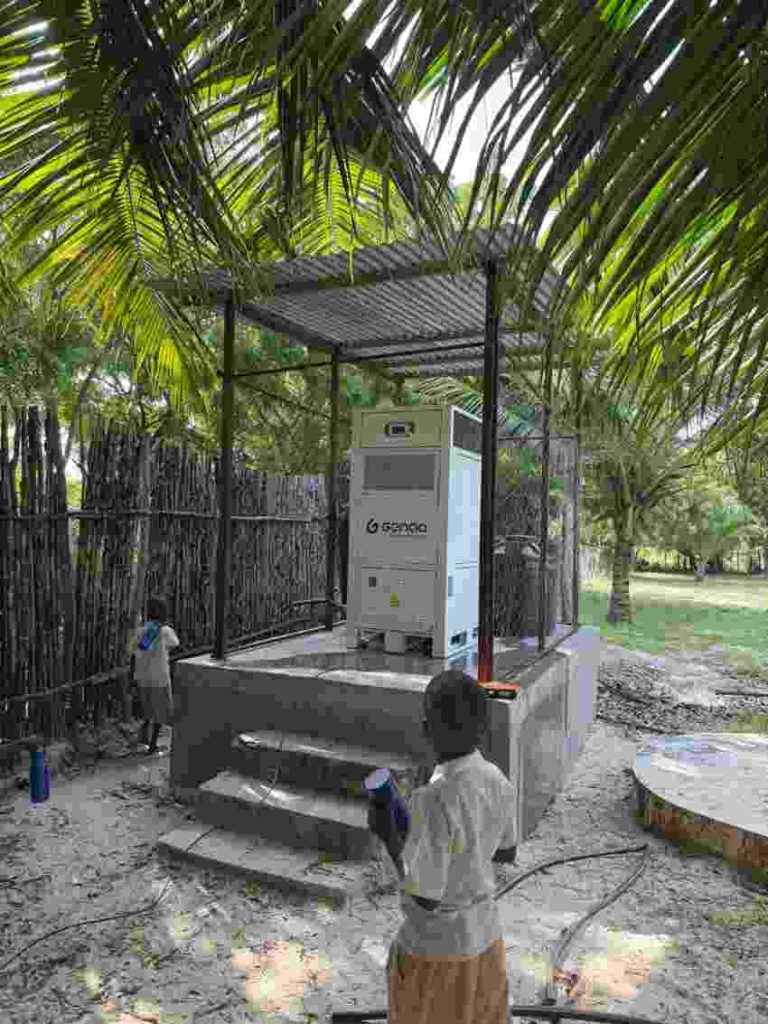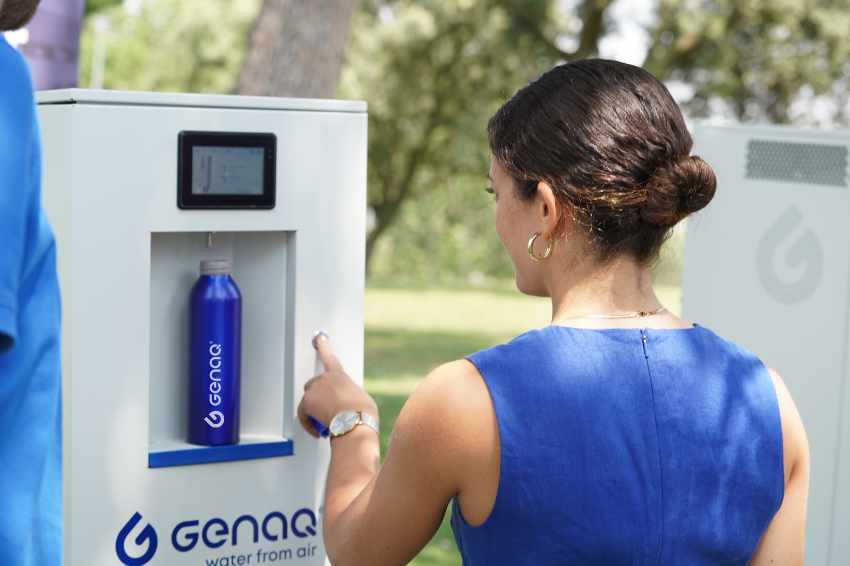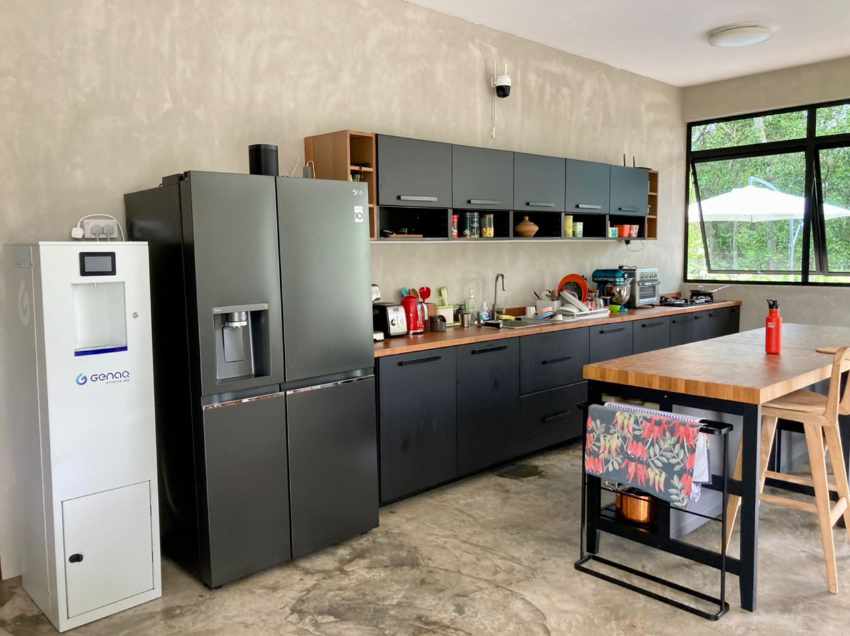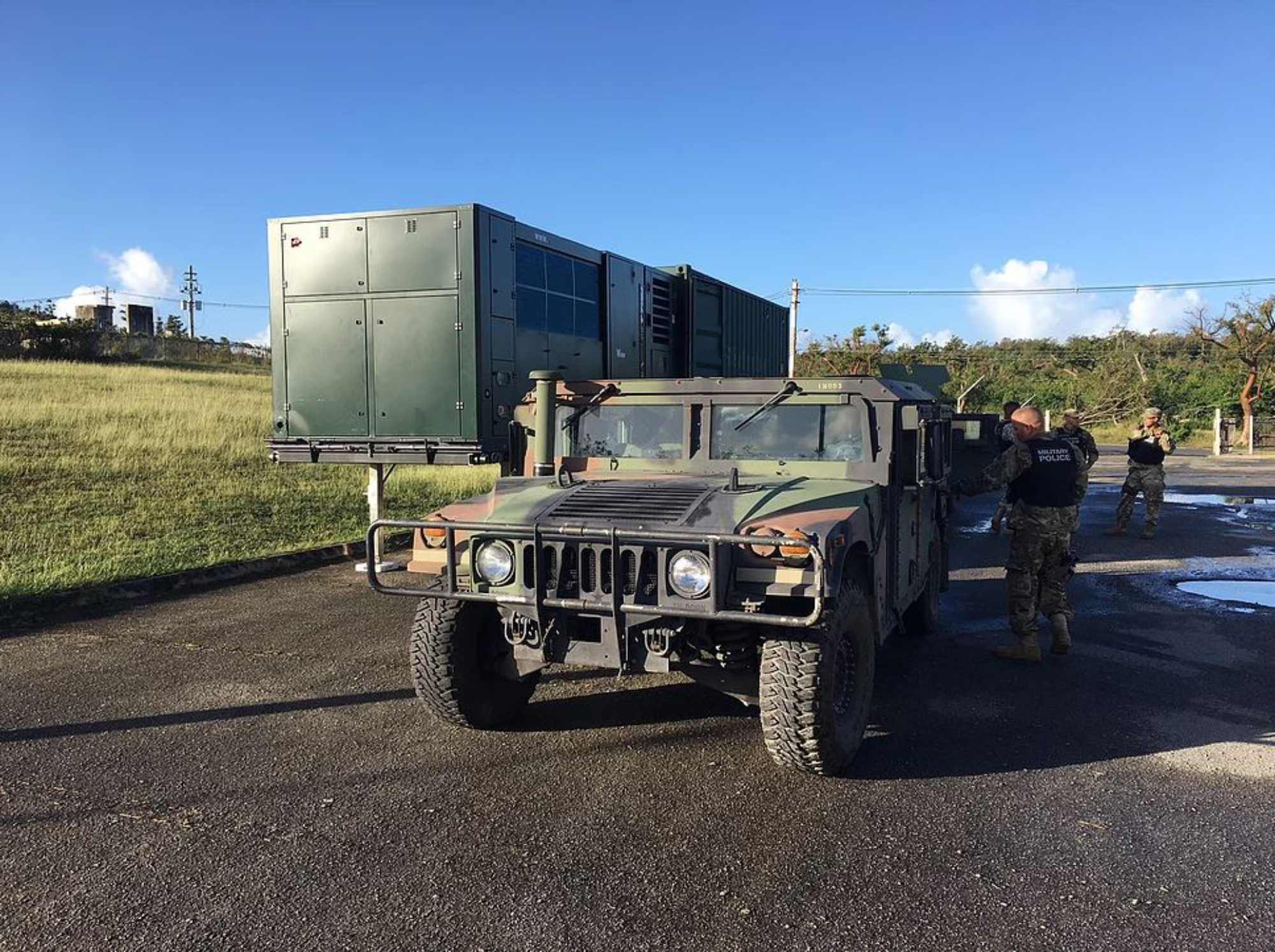GENAQ has been at the forefront of innovation in access to safe drinking water since 2008, when it began developing technology to create water from air.
Their atmospheric water generators offer the best water quality with high energy efficiency and low cost per liter. These generators, which operate using only air and energy, provide an off-grid, decentralized and sustainable solution for producing drinking water in the most challenging environments.
GENAQ has provided solutions in over 70 countries. The company’s mission is to ensure reliable access to clean drinking water, replacing bottled water and supporting a more sustainable future by drastically reducing plastic waste.
Interview with Carlos García, General Manager at GENAQ.
What are the main areas of activity of the company?
Carlos García: GENAQ’s atmospheric water generation technology is applied in several scenarios where water access is limited or sustainability is a key concern.
These include:
- Emergency response and humanitarian aid, supplying safe drinking water rapidly in crisis and disaster zones where infrastructure is compromised or nonexistent.
- Defense operations, offering portable, autonomous water generation solutions that provide with security of supply and quality and reduce resupply convoys.
- Remote industries, where conventional water infrastructure is lacking or unreliable, providing an independent and continuous source of potable water.
- Urban applications, including public premises, educational institutions, hotels, houses… seeking cheap and sustainable drinking water.
- Sustainability-focused projects, where water self-sufficiency, reduction of single-use plastics, and carbon footprint minimization are essential objectives.

What’s the news about new products/services?
C.G: GENAQ is actively expanding its portfolio with new developments focused on sustainability, efficiency, and accessibility. Among the most relevant innovations:
The company is introducing next-generation atmospheric water generators with optimized performance for low-humidity environments, making the technology viable in even more regions around the world.
Natural refrigerants are being implemented across the product line to reduce environmental impact and align with global sustainability standards.
A new domestic generator, Stratus S20, is under development. Designed for household use, it will produce up to 20 liters of drinking water per day, offering a clean and sustainable alternative to bottled water for personal consumption.
Direct coupling with solar energy without any batteries of inverters needed democratizing the access to water generation in remote areas.
Integration in an autonomous hydrogen generator that relies on solar and GENAQ’s technology to produce hydrogen without any supply and cost.
GENAQ already integrates IoT and remote monitoring systems in its generators, and is continuously advancing toward greater autonomy and remote accessibility, incorporating more functions to optimize operation, maintenance, and user interaction from any location.
What are the ranges of products/services?
C.G: GENAQ’s portfolio has 4 ranges aligned with their uses:
- Stratus: Designed in a water dispenser format to supply the purest water in public premises and homes. From 20 to 200 liters/day.
- Nimbus: Industrial generators that ensures pure drinking water supply in any scenario. From 500 to 4,500 liters/day.
- Cumulus: Designed with reinforced structure and portability features, to supply high-quality drinking water. From 500 to 5,000 liters/day.
- AWGplant: Solution for large high-quality water needs for residential water supply, bottling plants, industrial processes, etc. From 100,000 to 1,500,000 liters/day.
In addition to the equipment, GENAQ provides value-added services such as remote monitoring, preventive maintenance, spare parts supply, and technical assistance. Customization options are available to meet specific environmental or operational conditions, ensuring the best performance in each application.

What is the state of the market where you are currently active?
C.G: The atmospheric water generation market is still emerging and largely underdeveloped, mainly due to a general lack of awareness about the technology and its capabilities. In many regions, decision-makers and end users are unfamiliar with the concept of generating drinking water directly from air, which slows adoption despite the clear environmental and operational advantages.
That said, the market is experiencing steady growth, driven by global challenges such as climate change, water stress, and the push for sustainable and decentralized water solutions. Sectors like humanitarian aid, defense, remote industry, public infrastructure, or hotels are showing increasing interest in autonomous systems that reduce dependence on bottled water and improve long-term water resilience.
GENAQ is well positioned in this context, offering efficient, reliable and scalable solutions that operate in a wide range of environments.
What can you tell us about market trends?
C.G: Several overarching trends are emerging:
Decentralization of water supply: There is a growing demand for autonomous water production that are not reliant on existing infrastructure, especially in areas affected by drought, pollution, or logistics constraints.
Sustainability and environmental impact: With increasing attention on climate change and resource conservation, Atmospheric Water Generators is seen as a cleaner, more sustainable alternative to traditional water supply methods.
Technological evolution: Innovations making technology more versatile and efficient. This includes the adoption of natural refrigerants, improved energy performance, and the integration of smart, IoT-based monitoring systems that enhance autonomy and remote control.
Broader adoption and awareness: Institutional support, regulatory pressure, and public interest in resilient water solutions are helping accelerate adoption beyond traditional niches like emergency response and military use.

What are the most innovative products/services marketed?
C.G: GENAQ’s most innovative solutions focus on expanding the technology adaptation to the most important water challenges:
- Next-generation generators adapted for low-humidity environments.
- Natural refrigerants, reducing environmental impact and aligning with global sustainability standards.
- Advanced IoT integration, offering remote monitoring, predictive maintenance, and greater autonomy.
- Integration with solar energy.
- Autonomous hydrogen generation.
- The upcoming Stratus S20, a compact household generator.
What estimations do you have for the second half of 2025?
C.G: For the second half of 2025, our priorities focus on consolidating our presence, validating our technology, and expanding into new sectors and geographies.
We aim to:
- Continue positioning our technology in key sectors such as defense, humanitarian aid, and sustainable infrastructure.
- Maintain and expand pilot projects with major companies and institutions, as we’ve successfully done in recent years, to validate the performance and scalability of our systems in real operating environments.
- Launch the Stratus S20, our first residential generator, opening new commercial opportunities in the consumer segment.
- Enhance our remote services, including IoT-based monitoring and predictive maintenance, to support more autonomous, large-scale deployments.
- Grow our international footprint, identifying the most suitable local distributors in each region. Currently active in over 70 countries, we aim to reach 80 by the end of 2025.


